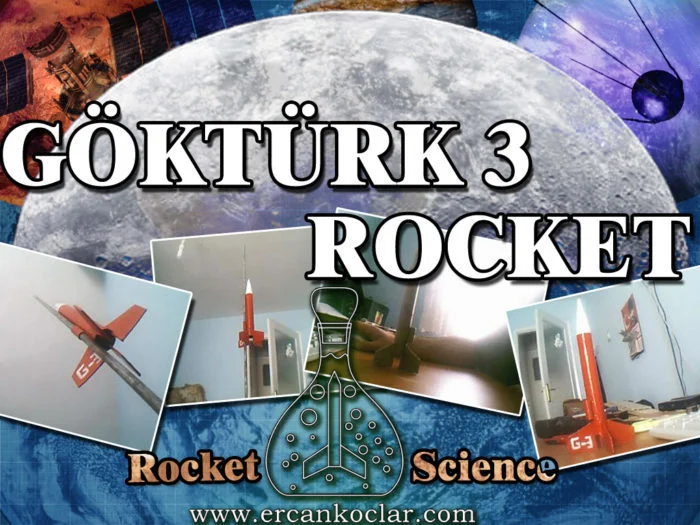This post is also available in:
![]() Türkçe (Turkish)
Türkçe (Turkish)
- Gök-Türk 3 Rocket Launch Video
- Gök-Türk 3 Rocket
- Technical Details
- Center of Pressure and Center of Gravity
- Result
GÖK-TÜRK 3 ROCKET
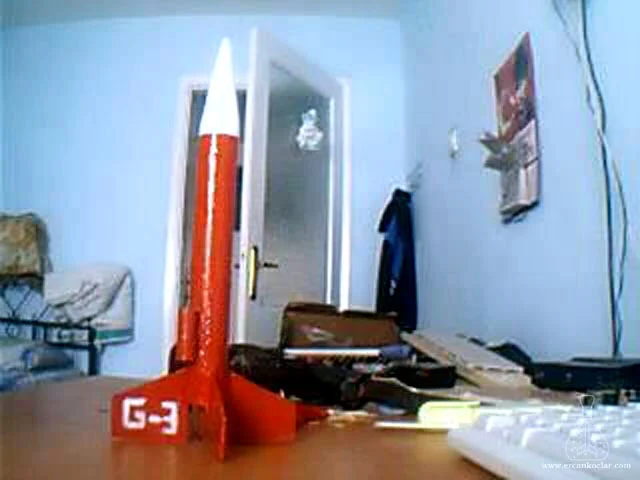
- The 3rd model in the Gök-Türk series.
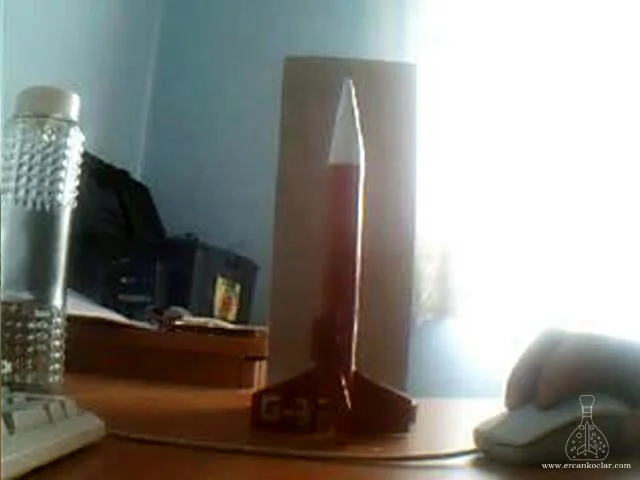
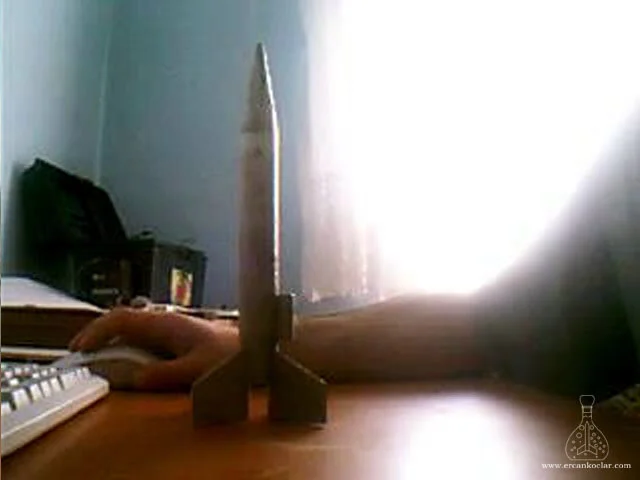
- Designed to be extremely lightweight.
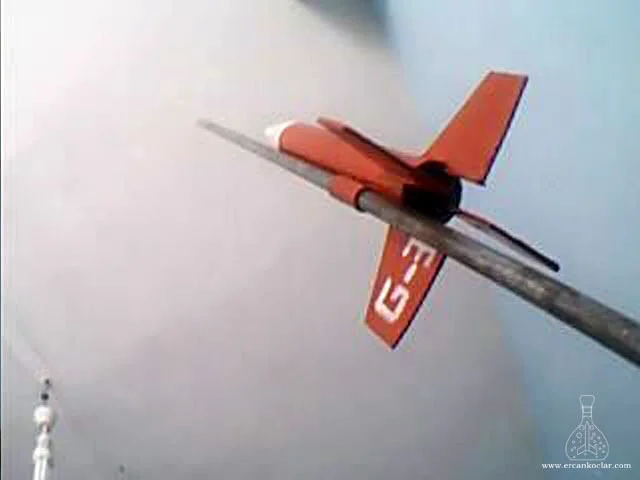
- According to my calculations, it reached a speed exceeding the speed of sound (detailed calculations will be explained later).
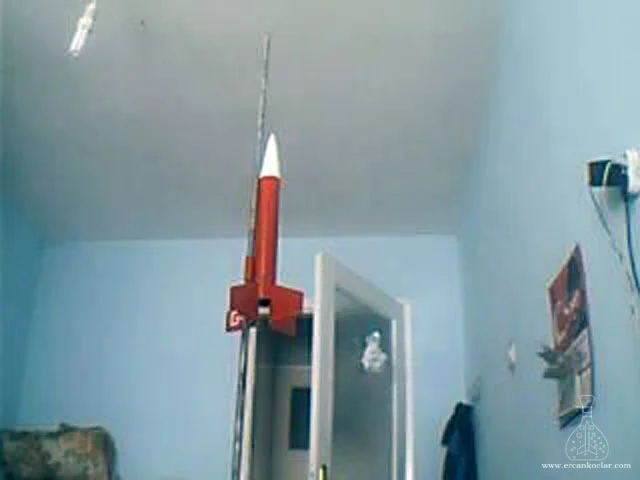
- The Göktürk-3 rocket is shown mounted on the launch pad.
Technical Details
- Unless otherwise stated in the technical drawings, all measurements are in millimeters.
- Total Weight: 33 g
Component Diagram
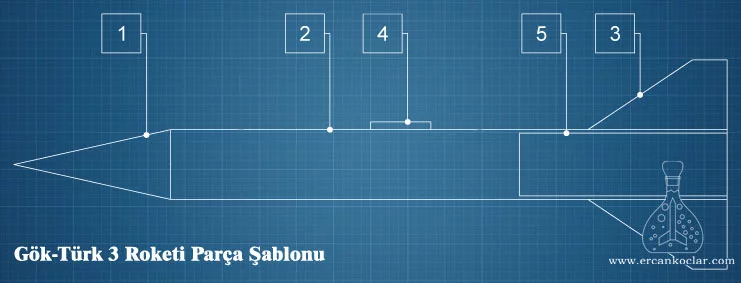
- The diagram above shows the schematic representation of the components of the Göktürk-3 rocket.
- Nose Cone – Fixed in place as no recovery system was included.
- Body Tube – The main structural component of the rocket.
- Fins – Provide aerodynamic stability for straight flight
- Launch Lug – Allows the rocket to be guided along a 3 mm launch rod during ignition for a straight ascent.
- Rocket Motor – The rocket’s power source; generates thrust via a chemical reaction.
1 – Nose Cone
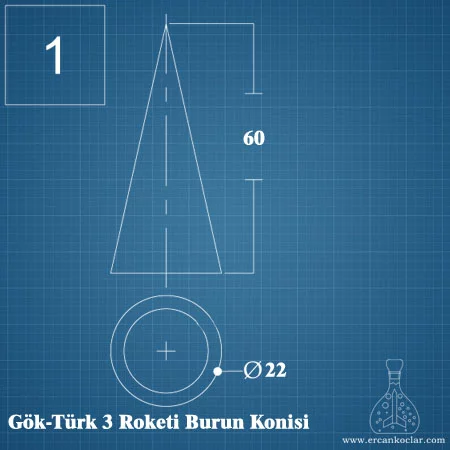
- A conical type nose cone was used. Although there are more efficient designs, this is the only practical type that can be crafted by hand using paper
- Weight: Unknown
- Material: White drawing paper
- Adhesive: Water-based wood glue
- Total Length: 60 mm
- Outer Diameter: 22 mm
2 – Body Tube
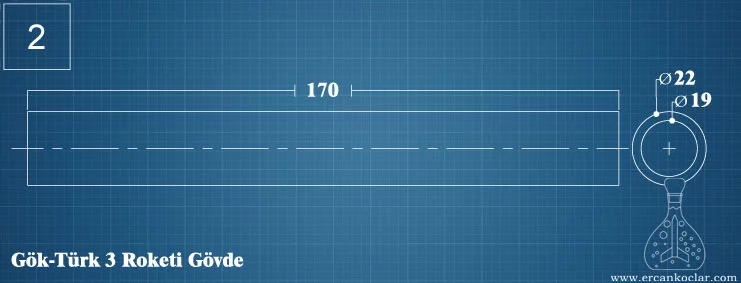
- Weight: Unknown
- Material: Poster board (thick cardstock)
- Adhesive: Water-based wood glue
- Total Length: 170 mm
- Outer Diameter: 22 mm
- Inner Diameter: 19 mm
3 – Fins
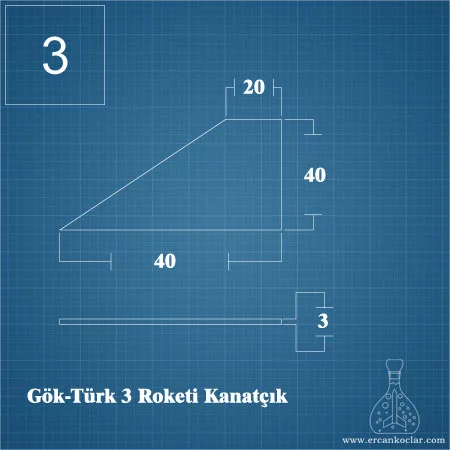
- The fin type used for the Göktürk-3 Rocket is the “Clipped Delta” type.
- There are a total of 4 fins.
- Weight: 2 g (total for all 4 fins)
- Material: 3 mm cardboard sheet
- Adhesive Used to Attach Fins to the Body: Super Glue
- Fin Thickness: 3 mm
- Trailing Edge: 40 mm
- Outer Edge: 20 mm
4 – Launch Lug
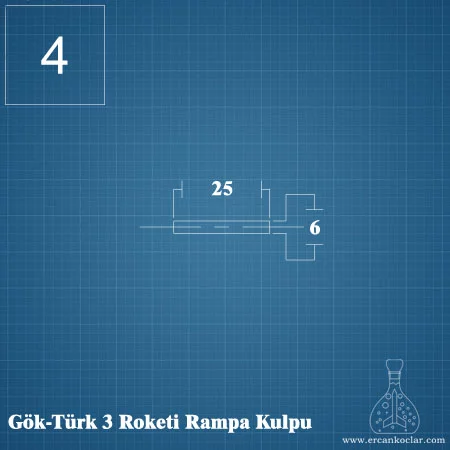
- Manufactured by rolling kraft paper
- Number of Lugs: 1
- Weight: 1 g
5 – Rocket Motor
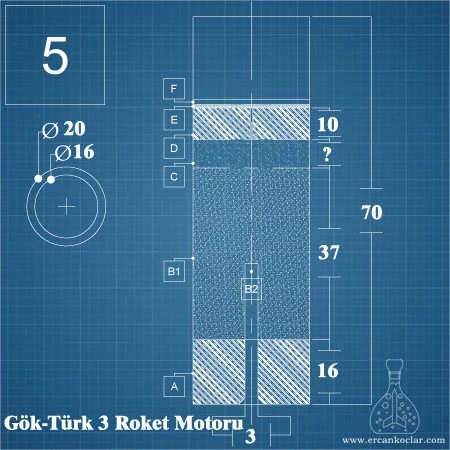
- A Type-C rocket motor was used. Its thrust is approximately 7–8 newtons.
- Burn Type: Internal combustion
- Exhaust: Non-toxic – Carbon dioxide + water vapor
- Material: Kraft paper
- Weight: 20 g
- Adhesive: Diluted (50/50) white wood glue
- Method: Hand-wrapped straight around a rod
- Total Height: 70 mm
- Outer Diameter: 20 mm
- Inner Diameter: 16 mm
5A – Nozzle (Exhaust Nozzle)
- Material: A mixture of bentonite clay and kaolin clay with paraffin additive. Ratio: (80/20) + 10%.
- Preparation Method: Clays were heated and paraffin was melted into the mixture.
- Insertion Method: Pressed into the motor using a hydraulic press. The applied force is unknown.
- Nozzle Inner Diameter: 3 mm
- Total Height: 16 mm
- Total Weight: Unknown
5B – Rocket Propellant
- Material: A mixture of potassium nitrate and sucrose. Ratio: (65/35)
- Preparation Method: Dissolved in water and melted, then hot-pressed into the motor.
- Total Length: 37 mm
- Total Weight: 10 g
- Outer Diameter: 16 mm
- Ignition Temperature: 200 °C – open flame
- Hygroscopic Property: Present – highly moisture-absorbing; deteriorates quickly when exposed to ambient humidity.
5B1 – Combustion Chamber
- The combustion chamber was drilled into the nozzle using a 3 mm drill bit. Since the fuel is not sensitive, such operations are suitable.
- Chamber Height: 16 mm
5C – Delay Element
- No delay element was used.
5D – Engine Cap
- The cap ensures high pressure is maintained while the fuel burns. Since it is not exposed to pressure near the nozzle, it was made thinner.
- Material: A mixture of bentonite clay and kaolin clay with paraffin additive. Ratio: (80/20) + 10%.
- Preparation Method: Clays were heated and paraffin was melted into the mixture.
- Insertion Method: Pressed into the motor using a hydraulic press. The applied force is unknown.
- Total Height: 10 mm
- Total Weight: Unknown
5E – Ejection Charge
- No ejection charge was used.
5F – End Cap
- No end cap was used.
Center of Pressure and Center of Gravity
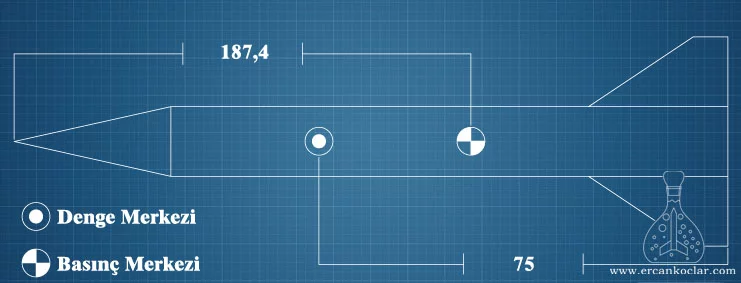
- Proper alignment of the center of pressure and center of gravity ensures the rocket flies straight. Without this balance, stable flight is impossible.
- Center of Pressure: 187.4 mm
- Center of Gravity: 75 mm
CONCLUSION
- The rocket was successfully launched.
- Due to its extremely light weight and the high speed of the internal combustion motor, it likely exceeded the speed of sound at liftoff, causing a sonic boom.
- The video recording is of very poor quality, so not much can be clearly seen.
- The rocket could not be recovered because it had no recovery system.
Göktürk-3 Rocket Launch Video
Focus Keyword: handmade model rocket
Meta Description: Göktürk-3 handmade model rocket project. An experimental design inspired by defense technologies. Detailed video and explanation available here.
Tags: model rocket, handmade rocket, amateur space project, Göktürk project, rocket engineering, prototype design, experimental project, space technology, defense technology
Visit the Wikipedia page for a definition of model rockets
NASA STEM resource for those interested in real rocket physics
This post is also available in:
![]() Türkçe (Turkish)
Türkçe (Turkish)
